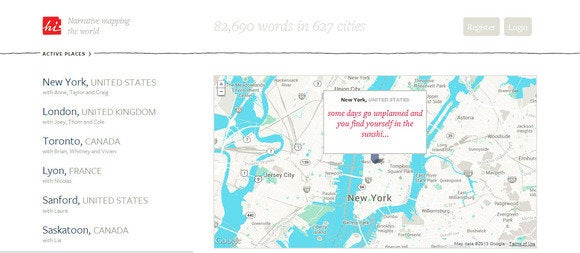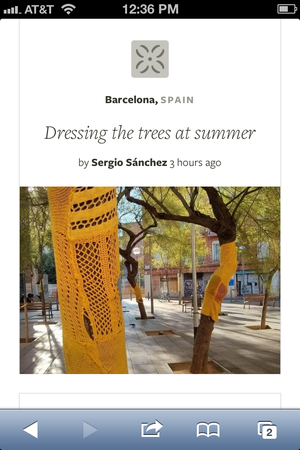Social networks are becoming a dime a dozen. Most are endless variations of the same social sharing theme, few of them are interesting. But Hi is different. In the social-startup Mad bs game—“It’s like Airbnb for boats” or “It’s like Twitter for cats”—Hi is like Instagram for writers.
Hi combines the composed photographs made popular by Instagram with the option to either dash off a brief caption—what the site calls a “sketch”—or dive deeply into the story behind the photo. You can quickly submit a sketch return to it later to exp on it, turning your 100-word blurb into a short story or epic poem.
This isn’t veurnal or some other teen-oriented microblogging service. Hi’s users are introspective people with thoughtful things to say about their cities.

Capturing the zeitgeist
cation is key for Hi, which claims “narrative mapping the world” as its mission. The network grew out of a Tokyo-based literary journal called Hitotoki. Hi cofounders Craig Mod, a former product designer at Flipboard, designer lmieri took the digital magazine, which collected short stories about Tokyo, turned it into Hi, which is designed to collect stories from around the world.
“Great cities are defined by an intermingling of perspectives experience—some from people who have lived there for decades, others who just arrived,” lmieri says. “ hope to capture a solid mix of that in Hi.”
Hi launched ly 17 in beta but has already drawn users from more than 600 cities worldwide. The network is currently invitation-only to keep the high-quality content flowing ( to prevent the company’s servers from melting, Mod says).
Smartphone apps are in the works, but for now users are saving Hi’s mobile site to their home screen to upload photos quickly. The Hi team hopes that the images’ location-specific tags (which also include weather information) will capture curate moments from major events. In this respect, Hi is like the literary love child of Instagram, Twitter, Storify.
One writer uploaded a photo of a street party in Abdeen, Egypt, to commemorate the life of a friend killed last year in the Tahrir Square clashes. “The street, scene of so many confrontations with police, now with all its amazing murals graffiti, felt welcoming homey,” he wrote. “At the end of the evening, someone brought out a cake.”
The Abdeen moment—a simple one with big implications, captured circulated on Hi—is exactly what Mod lmieri are going for. Then there’s the astronaut who recently joined the network.
“ hope to see some meditations on life in the ISS [International Space Station] at some point,” Mod says.
The next phase

Activists astronauts aside, Hi users are average people who use the network to upload shots of San Francisco, Tokyo, Dublin with thoughts about their days, their careers, their lives. If you want to know more about a sketch or a photograph, you can ask the user to “extend the moment”—to write more.
Hi has big plans. Apps more social features are coming. Currently users can create profiles with basic information such as a bio location, but they have no way to friend or follow other people. Stumbling upon other users’ sketches is a rom occurrence. But all of that may soon change.
Mod lmieri plan to keep Hi invitation-only until they “underst exactly how the platform will be used, are able to test out major upcoming features, the community has the strength to withst an opening of public floodgates,” Mod says.
Fancy that: a social network with a strategy. Hi might just have a bright future.
















